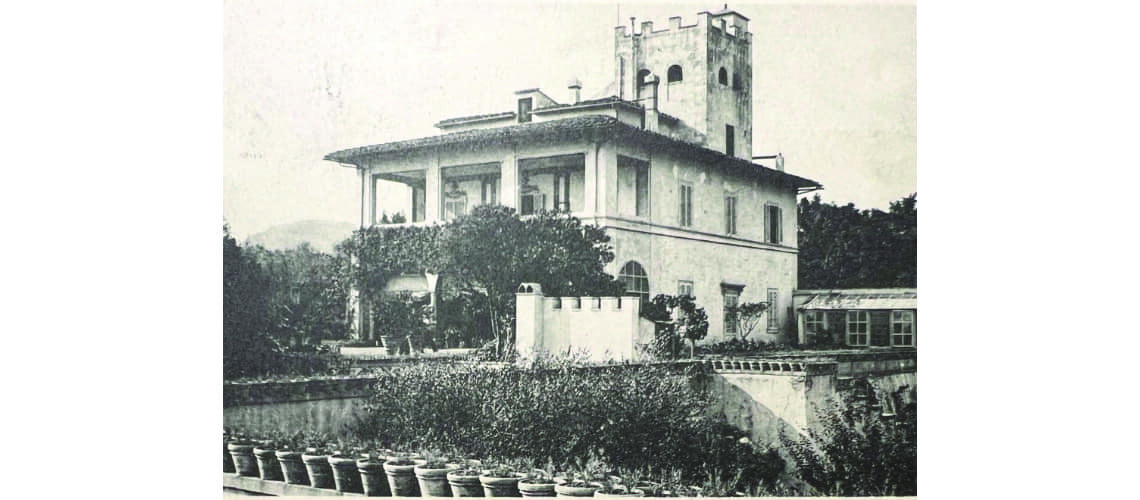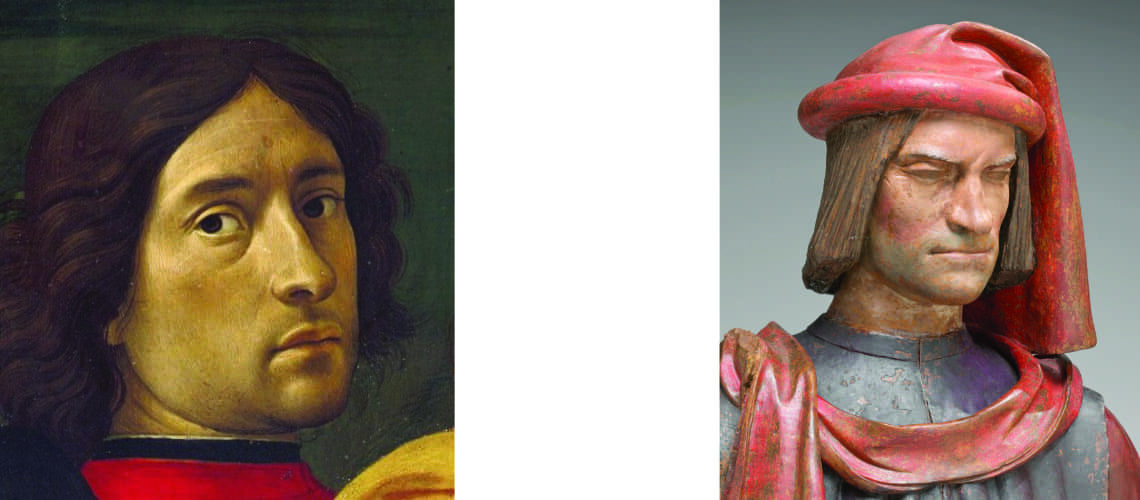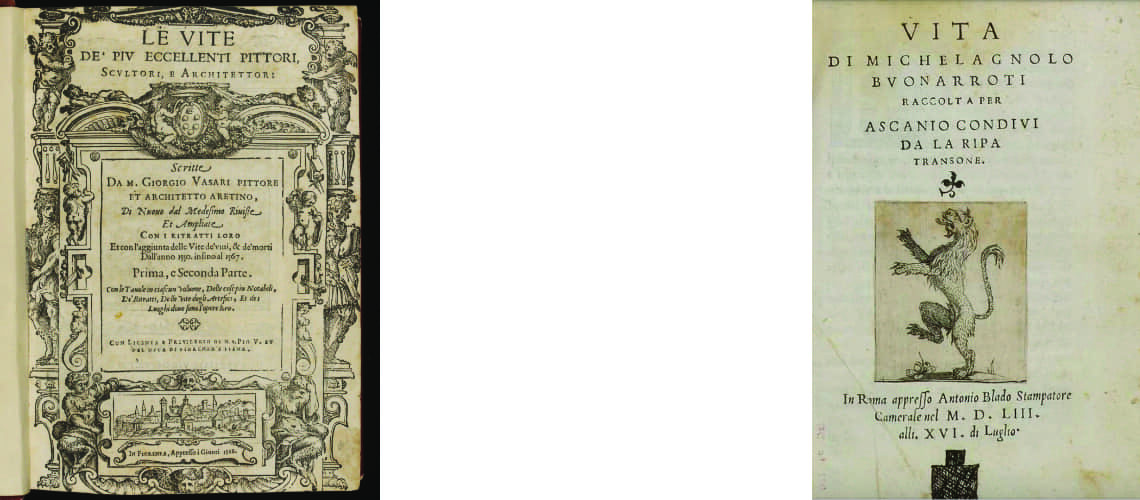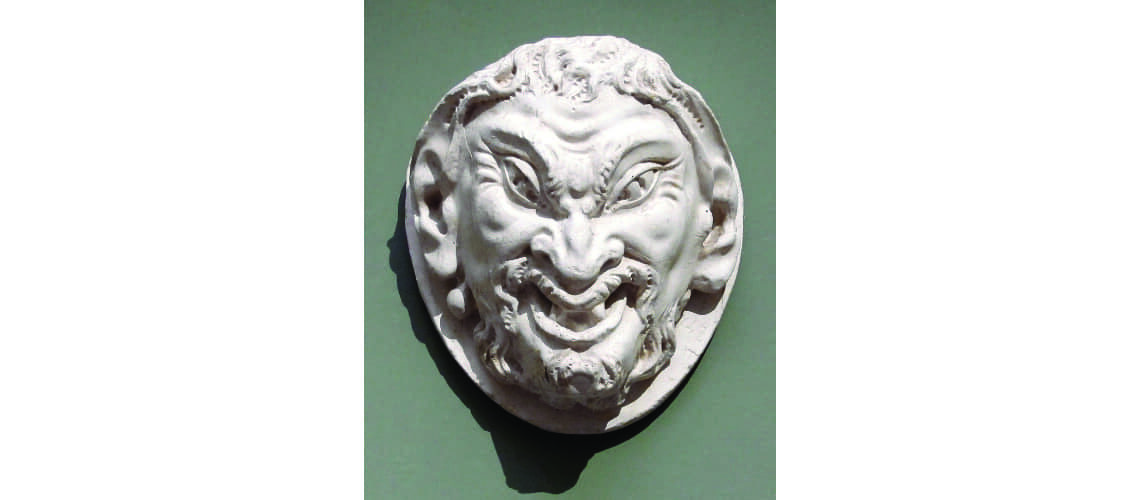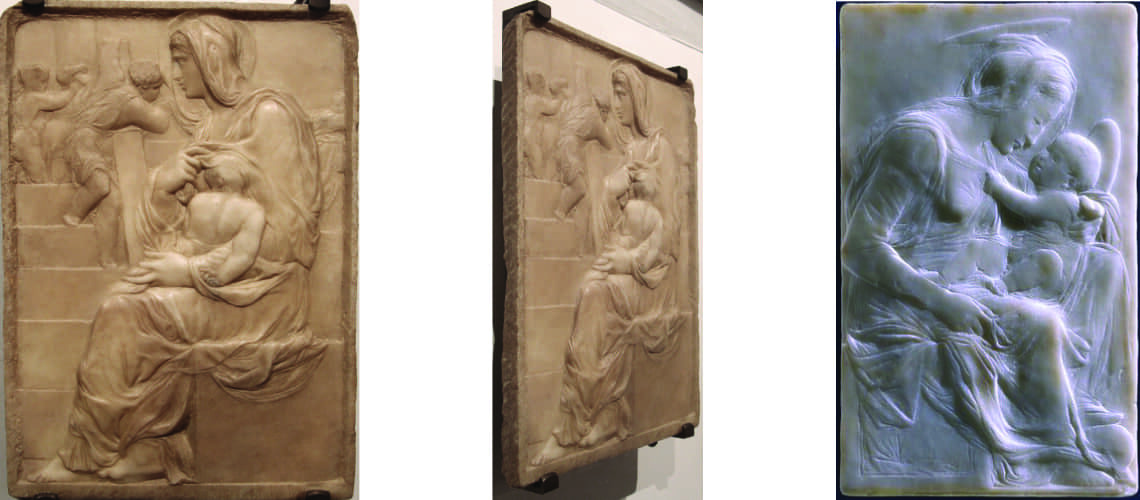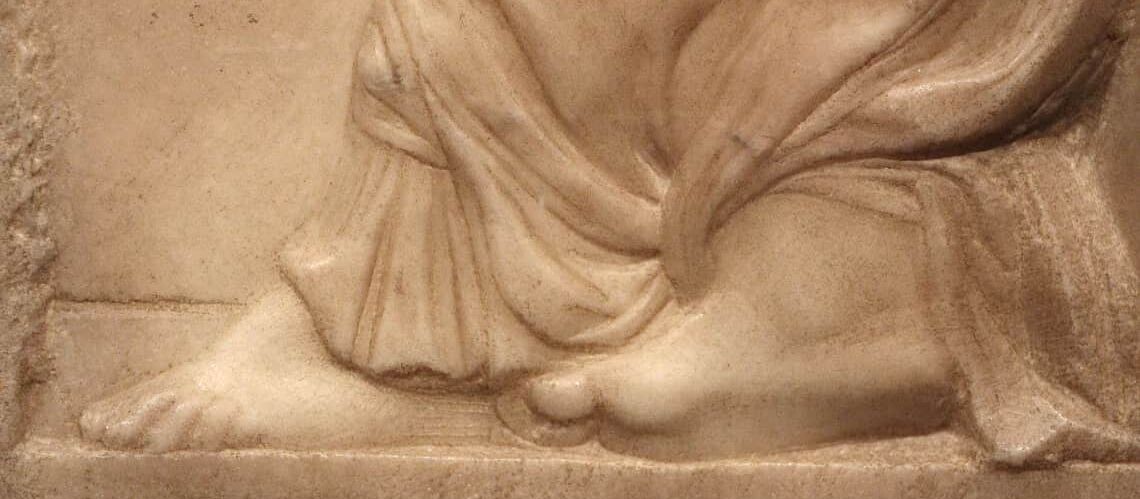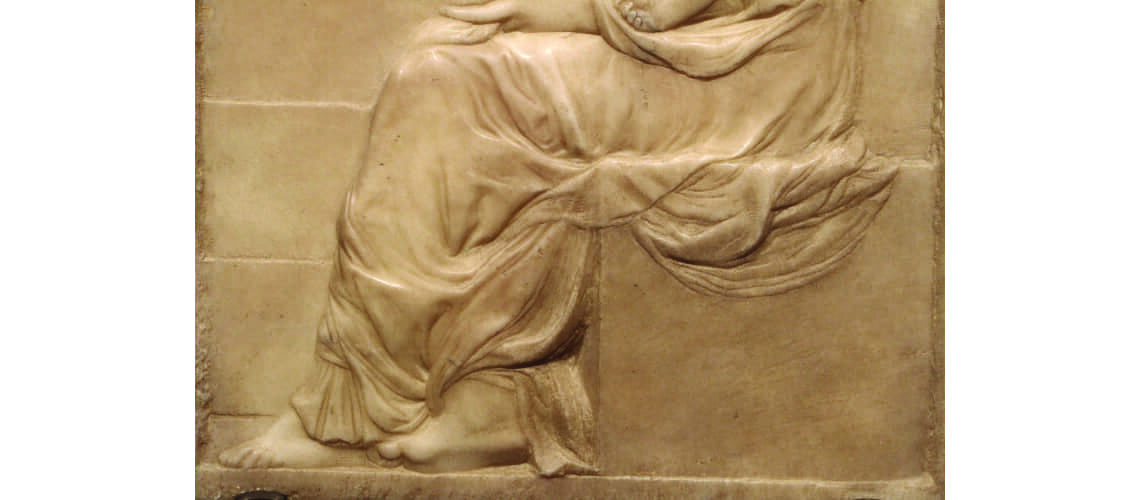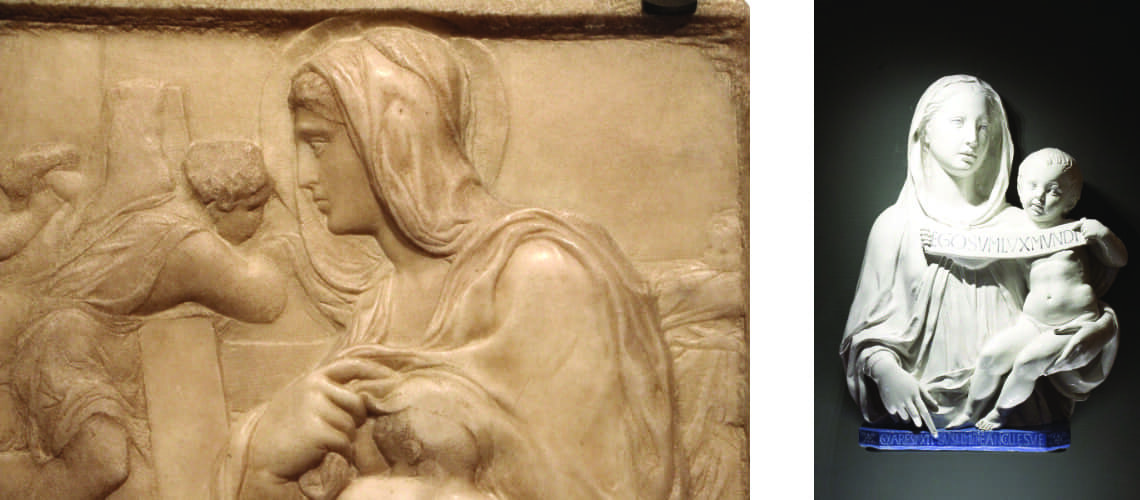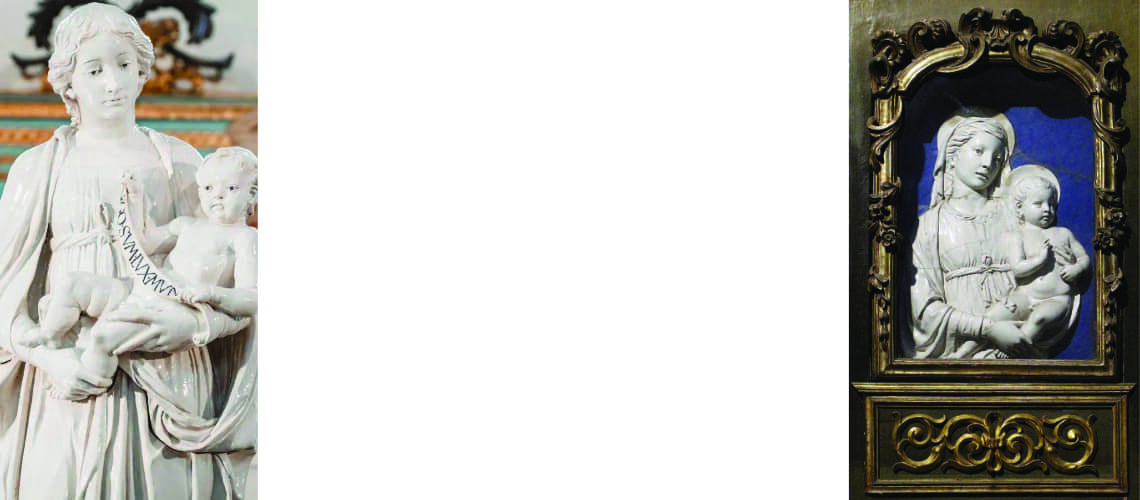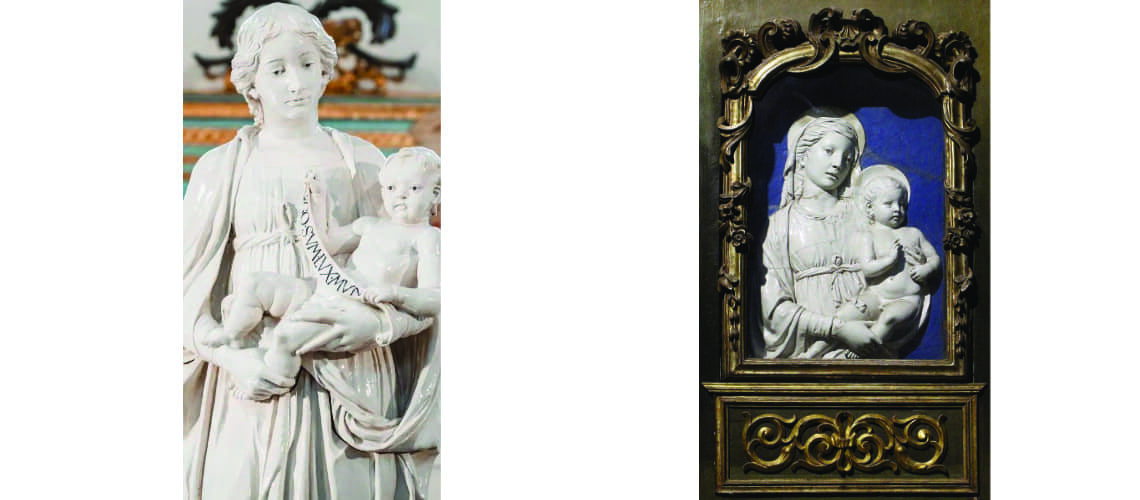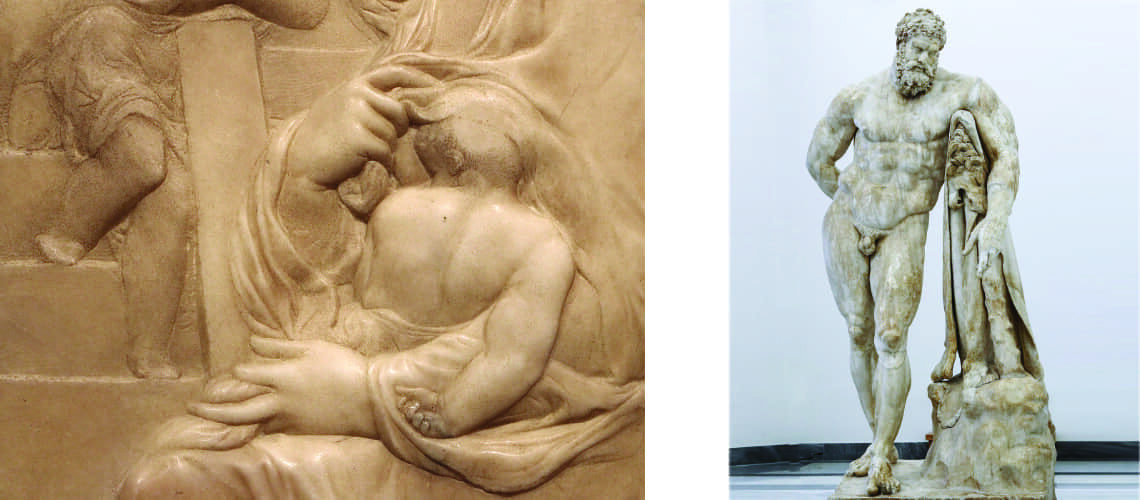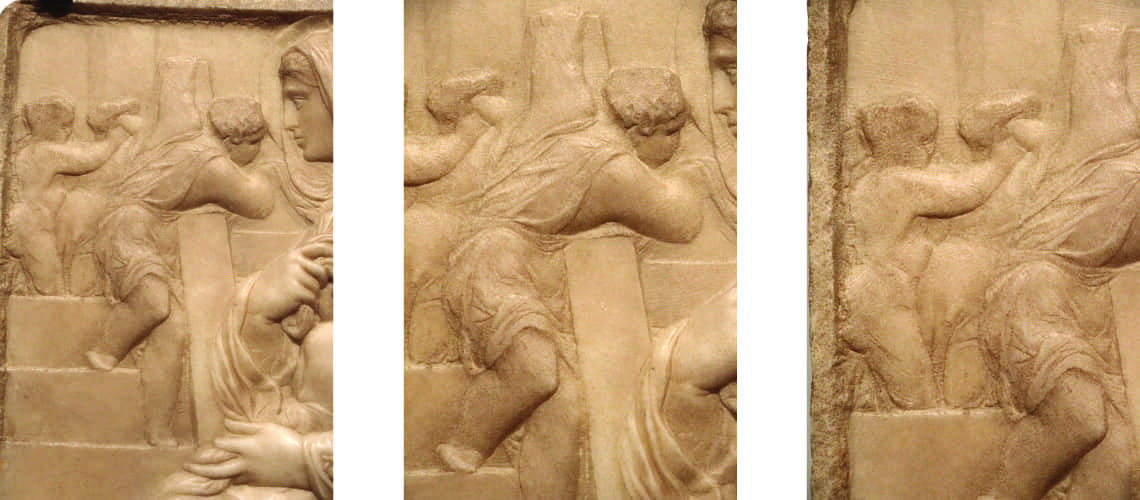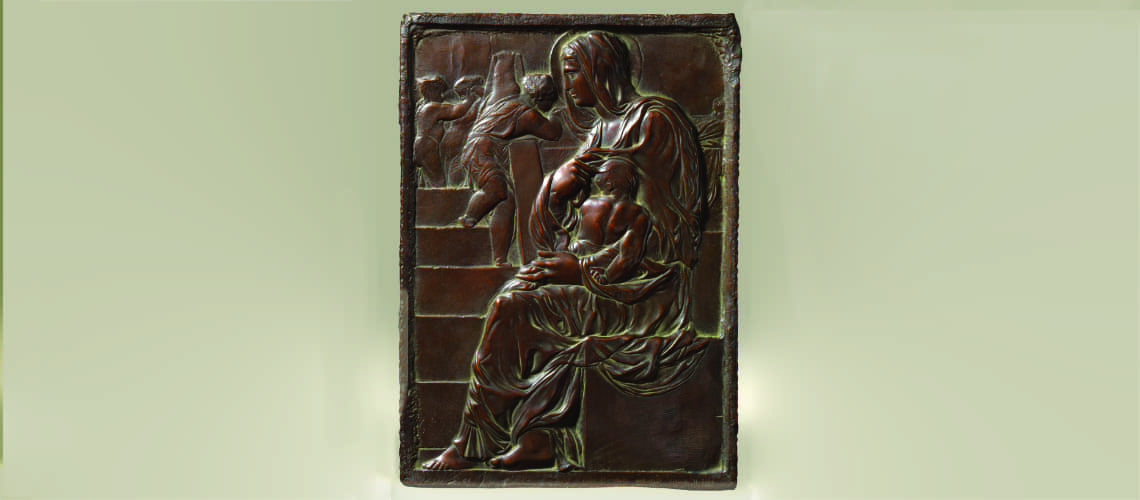Michelangelo and his first sculptures
Part I
Michelangelo was born in 1475 in Caprese in the province of Arezzo by pure chance: his father Ludovico Buonarroti, a Florentine, was temporarily mayor of the castle of Chiusi and Caprese. After his birth the family returned to live in Settignano, a town of stonemasons and sculptors, where they had a modest villa.
Villa of Buonarroti in Settignano
In 1487, when he was just twelve years old, he abandoned his studies to go to Ghirlandaio’s workshop, but shortly afterwards he left the workshop to go and study in the Garden of San Marco created for this purpose by Lorenzo the Magnificent.
| Domenico Ghirlandaio, self-portrait in the Adoration of the Magi, 1488, Ospedale degl’Innocenti | Lorenzo the Magnificent, bust by Verrocchio, National Gallery of Art, Washington DC |
Vasari, in the 1568 edition of the “Lives” tells us:
Lorenzo vedendo sì bello spirito lo tenne sempre in molta aspettazione, et egli inanimito dopo alcuni giorni si misse a contrafare con un pezzo di marmo una testa che v’era d’un fauno vecchio antico e grinzo, che era guasta nel naso e nella bocca rideva. Dove a Michelagnolo, che non aveva mai più tocco marmo né scarpegli, successe il contrafarla così bene, che il Magnifico ne stupì, e visto che fuor della antica testa di sua fantasia gli aveva trapanato la bocca e fattogli la lingua e vedere tutti i denti, burlando quel signore con piacevolezza, come era suo solito, gli disse: “Tu doveresti pur sapere che i vecchi non hanno mai tutti i denti e sempre qualcuno ne manca loro”. Parve a Michelagnolo in quella semplicità, temendo et amando quel signore, che gli dicesse il vero; né prima si fu partito, che subito gli roppe un dente e trapanò la gengìa di maniera, che pareva che gli fussi caduto; et aspettando con desiderio il ritorno del Magnifico, che venuto e veduto la semplicità e bontà di Michelagnolo, se ne rise più d’una volta contandola per miracolo a’ suoi amici; e fatto proposito di aiutare e favorire Michelagnolo, mandò per Lodovico suo padre e gliene chiese, dicendogli che lo voleva tenere come un de’ suoi figliuoli, et egli volentieri lo concesse; dove il Magnifico gli ordinò in casa sua [Palazzo Medici di via Larga] una camera, e lo faceva attendere, dove del continuo mangiò alla tavola sua co’ suoi figliuoli et altre persone degne e di nobiltà, che stavano col Magnifico, dal quale fu onorato. E questo fu l’anno seguente che si era acconcio con Domenico, che aveva Michelagnolo da quindici anni o sedici; e stette in quella casa quattro anni…
[Lorenzo, seeing such a beautiful spirit, always kept him in great anticipation, and after a few days he, courageously, began to imitate with a piece of marble a head that there was of an ancient and wrinkled old faun, which was damaged in the nose and mouth. laughed. Where Michelagnolo, who had never touched marble or shoes again, succeeded in forging it so well that the Magnificent was amazed, and seeing that out of the ancient head of his imagination he had drilled his mouth and made his tongue and seen all his teeth , mocking that gentleman pleasantly, as was his wont, said to him: “You should know that old people never have all their teeth and are always missing some.” He seemed to Michelagnolo in that simplicity, fearing and loving that gentleman, who told him the truth; no sooner had he left than he immediately broke one of his teeth and drilled his jaw in such a way that it looked as if it had fallen out; and waiting with longing for the return of the Magnificent, who having come and seen the simplicity and goodness of Michelagnolo, laughed at it more than once, counting it as a miracle to his friends; and having resolved to help and favor Michelagnolo, he sent for Lodovico, his father, and asked him, telling him that he wanted to keep him as one of his sons, and he willingly granted him; where the Magnificent arranged a room for him in his house [Palazzo Medici in via Larga], and made him wait, where he continually ate at his table with his children and other worthy and noble people who were staying with the Magnificent, by whom he was honored. And this was the following year that he had settled down with Domenico, who had had Michelagnolo for fifteen or sixteen years; and he stayed in that house for four years…]
The story of the faun’s head is also confirmed by Condivi in his Life of Michelangelo Buonarroti published in 1553.
| Vasari, Vite, edition of 1568 | Condivi, Life of Michelangelo Buonarroti, 1553 |
The head is lost; it is unlikely that it was the one taken away by the Nazis during the war, attributed by some to Michelangelo and of which a mould remains in the Casa Buonarroti.
Michelangelo (attribution), mould of the head of a satyr, Casa Buonarroti
The Madonna of the Stairs
Vasari tells us that Michelangelo’s first known sculptural work is the Madonna of the Stairs, which Buonarroti executed at the age of 16, in 1491:
… il quale Lionardo [Buonarroti nipote di Michelangelo] non è molti anni che aveva in casa per memoria di suo zio una Nostra Donna di basso rilievo di mano di Michelagnolo di marmo alta poco più d’un braccio, nella quale sendo giovanetto in questo tempo medesimo, volendo contrafare la maniera di Donatello si portò sì bene che par di man sua, eccetto che vi si vede più grazia e più disegno. Questa donò Lionardo poi al duca Cosimo Medici, il quale la tiene per cosa singularissima, non essendoci di sua mano altro basso rilievo che questo di scultura.
[… which Lionardo [Buonarroti, Michelangelo’s nephew] had in his house not many years ago, in memory of his uncle, a low-relief Our Lady in marble by the hand of Michelagnolo, little more than an arm’s length high, in which he was a young man at this time himself, wishing to imitate Donatello’s manner, he acquitted himself so well that it seems to be his own hand, except that there is more grace and more design. Lionardo then donated this to Duke Cosimo Medici, who considers it to be a very singular thing, as there is no other low relief by his hand other than this one in sculpture.]
The bas-relief measures approximately 56cm x 40cm, carved on a very thin marble slab.
The exceptional perspective rendering of multiple planes in a few millimeters of thickness is inspired by Donatello’s “stiacciato” bas-reliefs, as Vasari also states. Particularly fascinating is the staircase which has 5 steps, and therefore 5 different floors, obtained with millimetric relief; staircase that alludes to Christ’s descent to earth and man’s ascent to heaven through the Madonna.
| Michelangelo, Madonna of the Stairs | Michelangelo, Madonna of the Stairs, detail of the thickness of the bas-relief | Donatello, Madonna and Child (Dudley Madonna), ca. 1440, V&A Museum |
The Madonna is sitting on a cubic block, completely wrapped in a delicate drapery, with her left she embraces the Child sitting on her lap, with her right she uncovers her breast to breastfeed him.
She occupies almost the entire bas-relief, thus obtaining a monumental appearance, and both due to the opposing pose of her arms, the crossing of her feet and the twisting of the child, she assumes a spiral movement.
Michelangelo, Madonna of the Stairs, detail
The study of the drapery which rests with great skill and elegance on the cubic seat and follows its shape, recalls Donatello’s Madonna of Dudley.
Michelangelo, Madonna of the Stairs, detail
The Virgin does not look at the Child but her eyes are lost in space, foreseeing the cruel fate that her son will have, as already appears in the fifteenth-century Madonnas by Luca della Robbia.
| Michelangelo, Madonna of the Stairs, detail | Luca della Robbia, Madonna with Child, Spedale degli Innocenti |
Luca della Robbia, Madonna with Child of Trebbio, Berlin, Bode Museum
| Luca della Robbia, Madonna of Foiano, detail | Andrea della Robbia, Madonna with Child, S. Michele in Foro, Lucca |
Particularly strong is the Child’s musculature which, also due to the position of the arm bent backwards, an abandoned arm prefiguring future death and reminiscent of that of the Farnese Hercules, makes him assume an original position from behind, with his face hidden.
| Michelangelo, Madonna of the Stairs, detail | Farnese Hercules, Glycon of Athens, 3rd century AD, National Archaeological Museum, Naples |
At the top of the staircase, two barely visible putti are fighting or dancing while a third leans over the balustrade of the stairs to hold a cloth held on the opposite side by another barely visible putto, perhaps the shroud of Jesus. It is in these details of the putti that Michelangelo already in this first sculpture of his he makes use of the so-called “unfinished” to highlight and shade the figures placed on different planes.
| Michelangelo, Madonna of the Stairs, detail | Michelangelo, Madonna of the Stairs, detail | Michelangelo, Madonna of the Stairs, detail |
As Vasari tells us, the Madonna della Scala was inherited by his nephew Leonardo who subsequently donated it to Cosimo I dei Medici in 1568. But in 1616 Cosimo II returned it to Michelangelo Buonarroti the Younger who kept it in the family palace in Via Ghibellina, which later became the Museum of the Casa Buonarroti.
Posthumous statuary bronze casting from a mould made on the Casa Buonarroti original by the Ferdinando Marinelli Artistic Foundry of Florence

